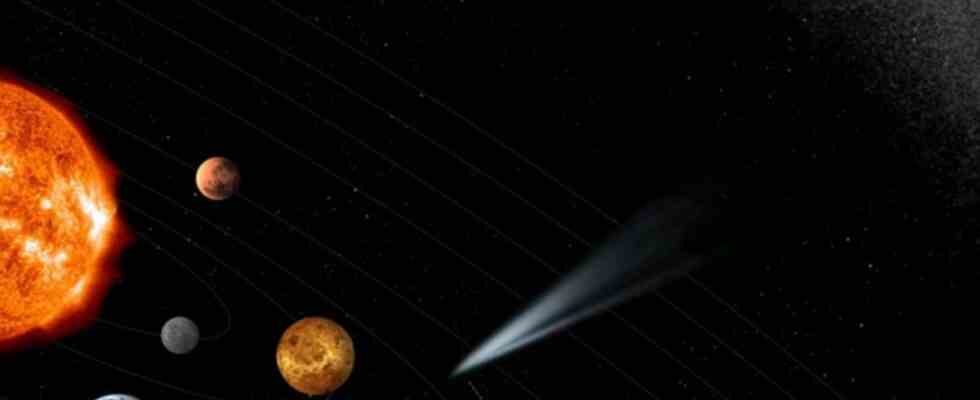Will this comet be in the shape of a duck or a potato like Tchouri visited by Philae during the peregrinations of Rosetta? No one can say for now, even among the scientists preparing the new space adventure Comet Interceptor. Validated on June 8 by the European Space Agency (ESA), in partnership with its Japanese counterpart (JAXA), this mission, “small” in size – less than 1,000 kg for a mother probe and two daughter satellites – will be big in suspense.
Its launch is scheduled for 2029 and its goal is to explore a “most primitive comet possible”, coming at worst from the confines of the solar system but, at best, outright from a planetary system other than ours, as we detect. about ten per year.
Blindly towards an uncooked comet
Why is this “virginity” required? “All known comets are short-period comets, which regularly pass close to the Sun and therefore have been ‘cooked’ by it over thousands and millions of years. The purpose of this mission is to discover and study a new comet, much closer to the conditions of formation of our solar system”, answers Philippe Garnier, teacher-researcher at the Institute for Research in Astrophysics and Planetology (Irap* ) from Toulouse who collaborates on two of the three instruments of Comet Interceptor.
As a consequence of this ambition, when the mission leaves, it will be “blind”, without knowing the ultimate objective. The probes – clandestine passengers of the Ariel mission leaving to find exoplanets – “will park” at the Lagrange L2 point, “a point of balance which allows you to stay behind the Earth and rotate with it, in balance” , explains Philippe Garnier. And from this observatory car park, they will wait, the rare pearl. To find it, they will stay, for weeks or even months, focused on the Oort cloud, “a huge reservoir of small icy pebbles from the remains of the formation of the solar system which have been ejected very, very far by the forces of gravity”.
“Family” cooperation for closer observation
Another originality of the mission, thanks to the family cooperation of the three satellites, the comet on which they will have set their sights will be studied from every angle to reveal a “kind of 3D profile”. “A single point of view is quite simplistic, emphasizes Philippe Garnier, while Rosetta showed us how complicated things are on a comet which is not at all symmetrical and where different processes are at work on or below the surface. The French instrument Lees will be in charge of measuring the electrons to know the dynamics of the comet. The European Maniac instrument will be able to analyze the composition of the gases ejected. Oxygen, dioxide or carbon monoxide for sure. But also perhaps other organic materials that we find on Earth and which perhaps are the distant legacy of another comet.
Rosetta has already discovered phosphorus and an amino acid on Tchouri, and “opened a lot of doors”, notes Philippe Garnier. Who knows if a more original comet does not harbor new surprises and new clues to unlock the secrets of life on Earth?
*IRAP/OMP – CNRS/CNES/UT3 Paul Sabatie

